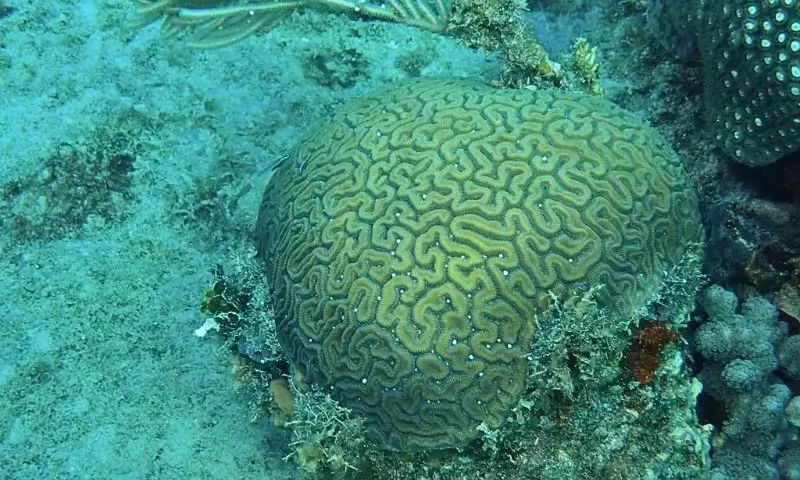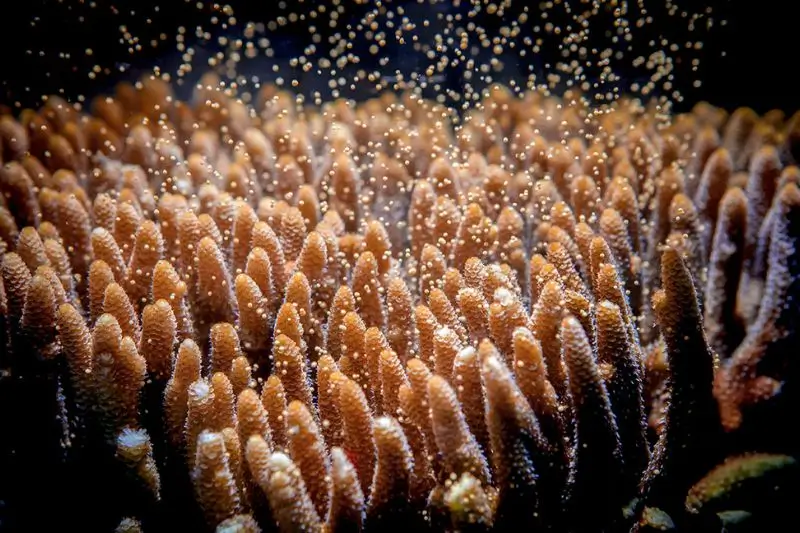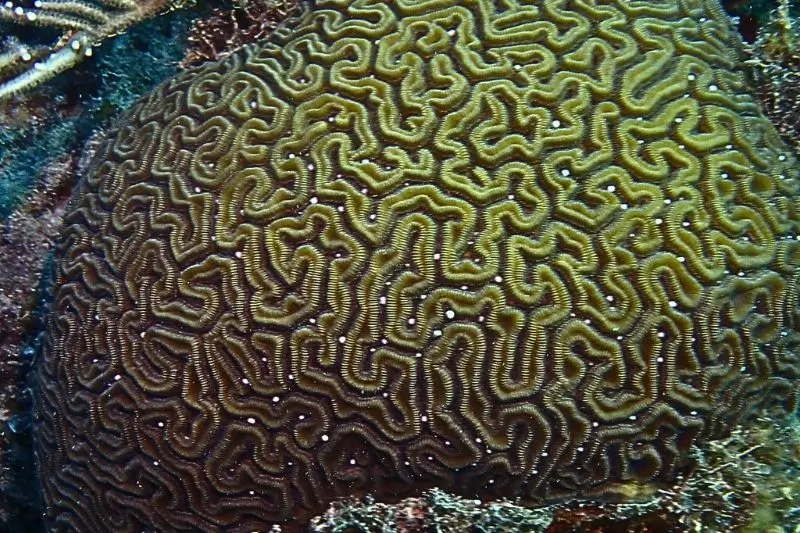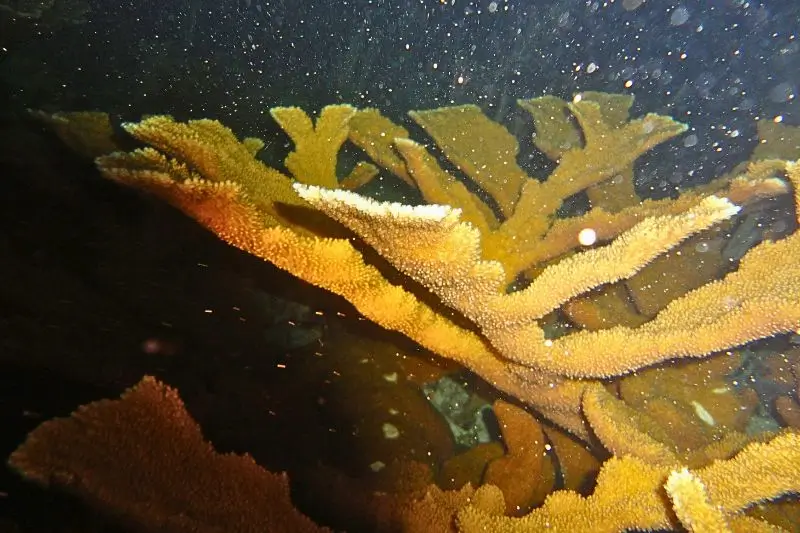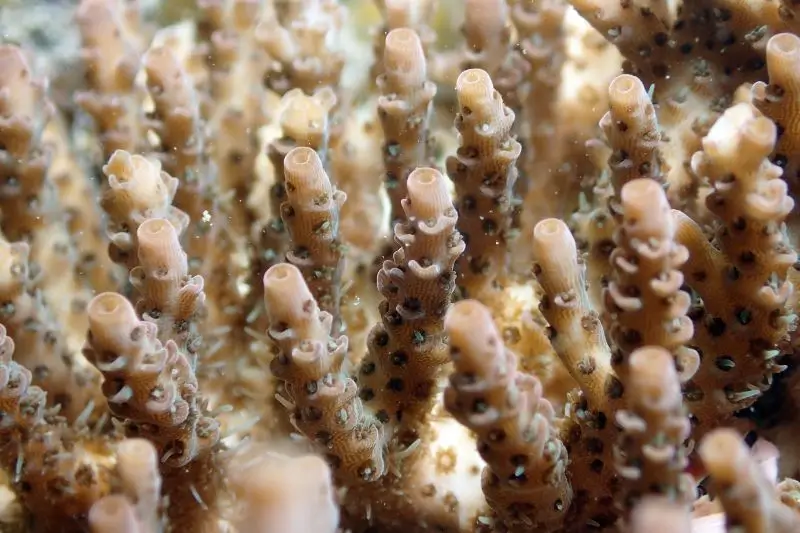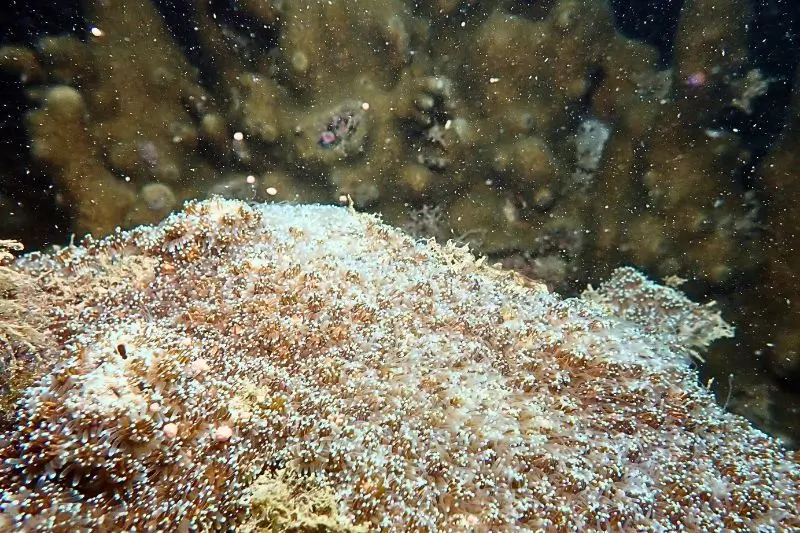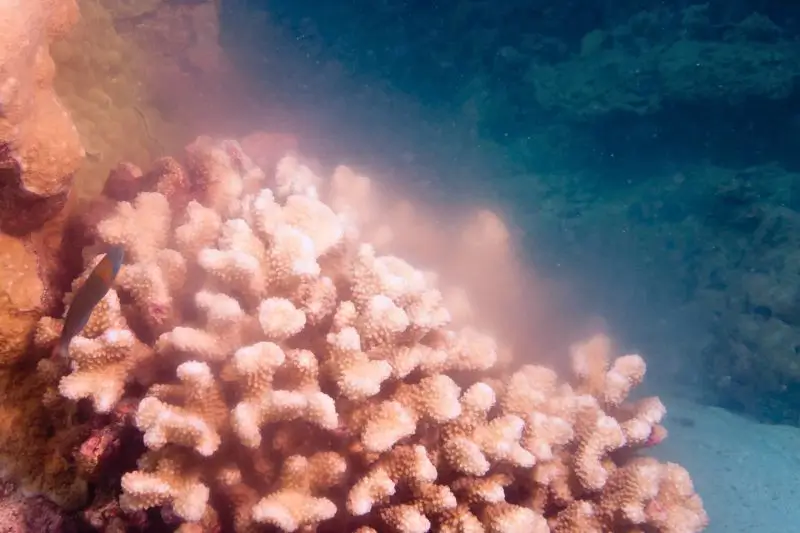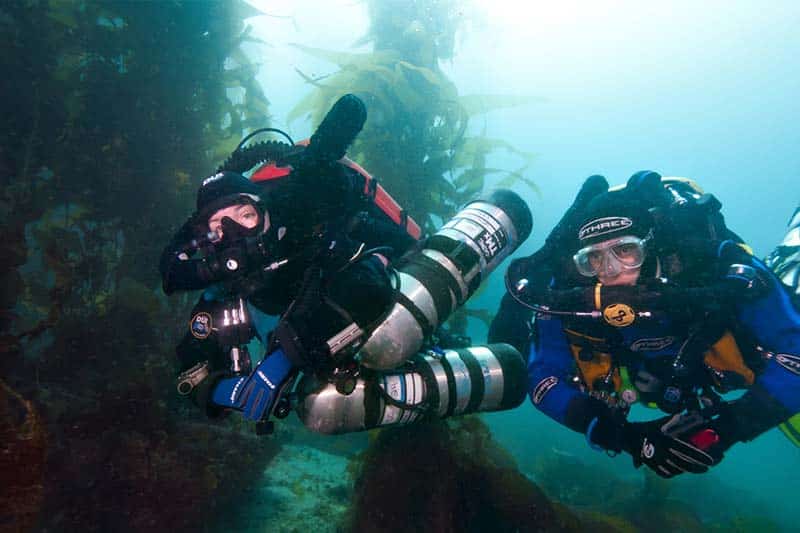2. What is Coral Spawning?
Let’s get straight to the point.
Coral spawning is a kind of coral reproduction.
But not like other sea creatures that do their own thing.
Coral spawning is a massive event. Coordinated. All the corals on the reef release their sex cells at the same time. Yes, you read that right: corals spawning simultaneously.
Think of it like an underwater choreography. A symphony of life.
Millions of coral eggs and sperm floating together, like the sea is filled with stardust. Or better yet: like a tropical snowfall underwater.
2.1. Why does Coral Spawning happen this way?
Because nature doesn’t like wasting time.
If one coral releases its eggs one day… and another coral does it a week later… fertilization would be much harder. No baby corals.
That’s why coral spawning is synchronized. All together. All at once. That way, the chances of success shoot way up.
More coral eggs get fertilized.
More coral larvae, called planulae, are born.
And there are more coral larvae ready to settle in new spots on the reef.
That’s the key to coral spawning.
It’s not just about making baby corals for the sake of it. It’s about securing the reef’s future.
And they do it at night.
What factors influence coral spawning?
Coral spawning doesn’t just happen by chance.
Corals don’t wake up one day thinking, “Today’s a great day to release some eggs and sperm.”
The reproduction of coral reefs is a perfectly timed event, and researchers are still unraveling its mysteries.
So, what do they know so far?
Let me tell you.
First, the moon.
The lunar cycle is key. Corals know it well. They wait for the full moon to launch their eggs and sperm into the water.
Moonlight works like a clock. A natural timer that tells them: “Now.”
Second, the water temperature.
As the sea gradually warms up, corals start getting ready. It’s like something ripens inside them.
The gametes develop and get prepared for the big moment.
Third, the sun.
Yes, sunlight also plays a role in coral spawning.
It helps fine-tune the timing.
Fourth, the tides.
Coral spawning usually happens when the water is calm. When there isn’t too much current.
Why?
Because when the water doesn’t move much, the eggs and sperm can find each other more easily. They don’t get scattered everywhere. They stay close together, increasing the chances of fertilization.
Fifth, sunset.
Coral spawning almost always happens at night. Usually, just after the sun goes down.
Why? Because at night there are fewer eyes watching. Fewer fish lurking around. Fewer predators hungry for coral eggs.
That protects the eggs and coral larvae from daytime predators, the ones with sharp vision when the sun is out.
Sixth, the wind.
If the wind is calm, even better.
That way, the eggs and sperm gather at the surface. They form those famous shiny layers in the water.
What scientists call “surface slicks.”
That’s when the real explosion of life begins.
A sea full of new life.
What does that mean?
New baby corals will be stronger. They’ll resist disease better. They’ll handle environmental changes better.
It’s a life insurance policy for the reef.
And on top of that… it’s a stunning visual show.
Watching a coral spawn live is like witnessing a miracle. A snowfall of coral eggs in the ocean. A reminder of why we need to protect reefs.
What happens next?
Once the eggs are released, the magic begins. Sperm in the water fertilizes them.
From there, coral larvae are born.
They’re tiny. Transparent. Almost invisible. These larvae are called coral planulae. They look like tiny specks of dust floating in the water. But each speck is a potential new coral.
And then?
The coral larvae drift for days, sometimes weeks. They search for a spot on the reef, a calm place to settle.
When they find it, they attach to the substrate and start building their calcium carbonate skeleton.
That’s the start of a new coral. A baby coral that, if all goes well, will grow and become part of the reef’s future.
That’s coral spawning, a life cycle that’s been happening for millions of years. And one you can witness with your own eyes if you know when and where to look.




